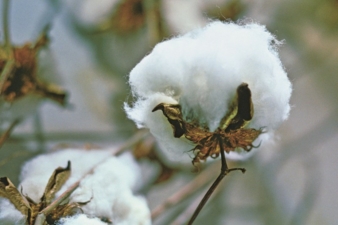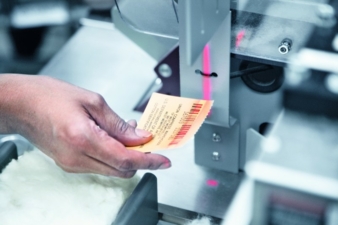21/05/2015 — auf Deutsch lesen
“Old” raw cotton and then?
Raw cotton destocking can bring about quality issues for spinners. The price may be attractive, but cotton that has been in long-term storage is a risky purchase. Some thoughts about the quality of cotton that has been stored in warehouses for lengthy periods.
It is estimated that more than 100 million bales now sit in warehouses around the world – a stockpile which would supply the entire textile industry for a whole year. China alone has more than half of this total inventory, at 62 million bales, which would be enough for two years of domestic textile needs in this, the largest single cotton-consuming, country.
Cotton growers are bound to cut back outputs as demand falls and the cotton supply chain starts destocking on a large scale. So, is this good news for spinners, if a glut of lower-priced cotton is soon to hit the market? The answer is ‘probably not’.
The big problem is likely to center on how long the cotton stocks have been warehoused, and under what conditions. It is an acknowledged fact that raw cotton quality declines over time, even when stored in excellent conditions. The major issue is loss of color grade, often referred to as ‘yellowing’ – and it is not always readily apparent without proper testing. So, a cotton may emerge from the gin and into the warehouse with excellent quality ratings, recorded and tagged at this point. But, over time, color degradation will take its toll on the quality level, especially when the cotton is warehoused for long periods.
Special attention should be paid to cotton sourced from areas with enormous stockpiles, where storage options are often poor, with farmers keeping cotton loose in sheds, exposed to changing environmental conditions and moisture – a clear quality risk.
In the near future, there will be acts to balance mill consumption with cotton production. One way will be to cut back on imports, so that domestic mills will buy warehoused supplies. But if Chinese spinners are aware that this cotton may have been in the warehouse for as long as three years, they might baulk at the potential quality risks it carries. In those circumstances, some of these supplies might be unloaded to world markets – spreading the risks to spinners everywhere.
Customers who purchase cotton which has been in long-term storage will almost certainly not be able to rely on the quality data tagged on the bales. Careful testing of incoming cotton for key quality parameters is vital if spinners are to avoid these potentially serious problems from damaging their business prospects.
Color grade is a key driver of raw cotton pricing, always a factor in buying and selling negotiations. That is because a number of serious fabric faults can be traced back to colour grading issues. It is essential that spinners know exactly the correct colour data for every cotton purchase, so they can ensure that mixing of the bales at the start of the spinning process is appropriate for the yarn quality being produced. Extensive testing of colour degradation of cotton under various environmental conditions has resulted in clear evidence of the seriousness of the problem. The longer that cotton is in storage, and the worse the warehousing conditions, the quicker and more severe will be the loss of colour grade.
Even in an ideal storage environment, in a cool and dry warehouse, cotton that is kept for more than a year will start to degrade. If conditions are unsuitable – a hot and humid warehouse, for example – the ‘yellowing’ will occur after only six weeks.
The effect of the storage conditions on this problem is less widely known. What spinners will realise only too well is that yarn quality can be drastically affected by inaccurate colour grade data. The defect known as barré is an unwanted striping effect in woven or knitted fabric, which becomes visible only during fabric manufacture or even at dyeing – the worst possible times to detect off-quality. The barré effect can be caused directly by inaccurate colour grade data, often taken from outdated bale tags. As has been explained, quality tags on the bales are only completely valid for the time of issue. So spinners can be faced with costly quality claims and lost reputation for this single issue.
David McAlister, Product Manager for Cotton Classing within Uster Technologies, says: “Relying on data that does not represent the current quality of the cotton results in unavoidable issues of unforeseen enormity, with repercussions along the entire textile value chain in terms of both quality and profitability – and spinners will be the ones in the firing line.”
The solution for spinners is effective cotton classing, in other words re-testing raw cotton samples before making a purchase decision. For this task, the Uster HVI 1000 is the globally-accepted instrument, used to set cotton calibration standards by the world’s leading cotton authorities, including USDA in the USA, CFIB in China and many other national bodies. The HVI provides fast and accurate data on color grade levels, so that spinners can compare quality data from bale tags with their own test results. Not only does it give them security that their cotton purchase is good value, it also helps to determine the optimum mix of qualities for the start of the spinning process.
“Rising worldwide yarn quality requirements and the realistic risks from long-term raw cotton stocks cannot be ignored. There could be a serious impact on world markets for many years to come. But the situation also presents an opportunity for smart spinners who can deliver consistent yarn quality levels supported by accurate raw material testing.”
McAlister points to a 2002 study by Cotton Incorporated for some stark illustrations of the financial impact of the barré problem – and the massive cost savings possible with the Uster HVI 1000. “The study showed that producing fabric with barré costs about 21,400 Euros (USD 27,000) for every 1,818 kg (4,000 lbs.) of fabric. That means a typical 50,000-spindle mill, producing 30,000 kg of standard-count yarn per day, would be losing 400,000 Euros (USD 500,000) each day. At this rate, a single day of preventing barré would more than cover the investment cost of HVI instrumentation – as well as protecting hard-won profit margins.”





